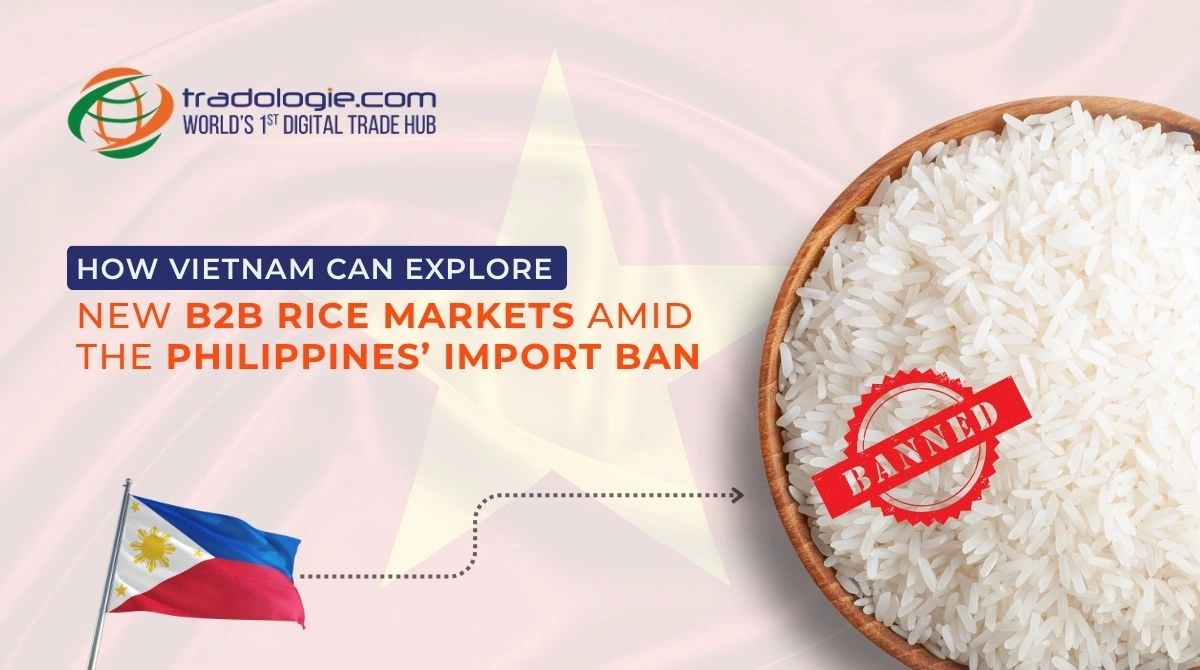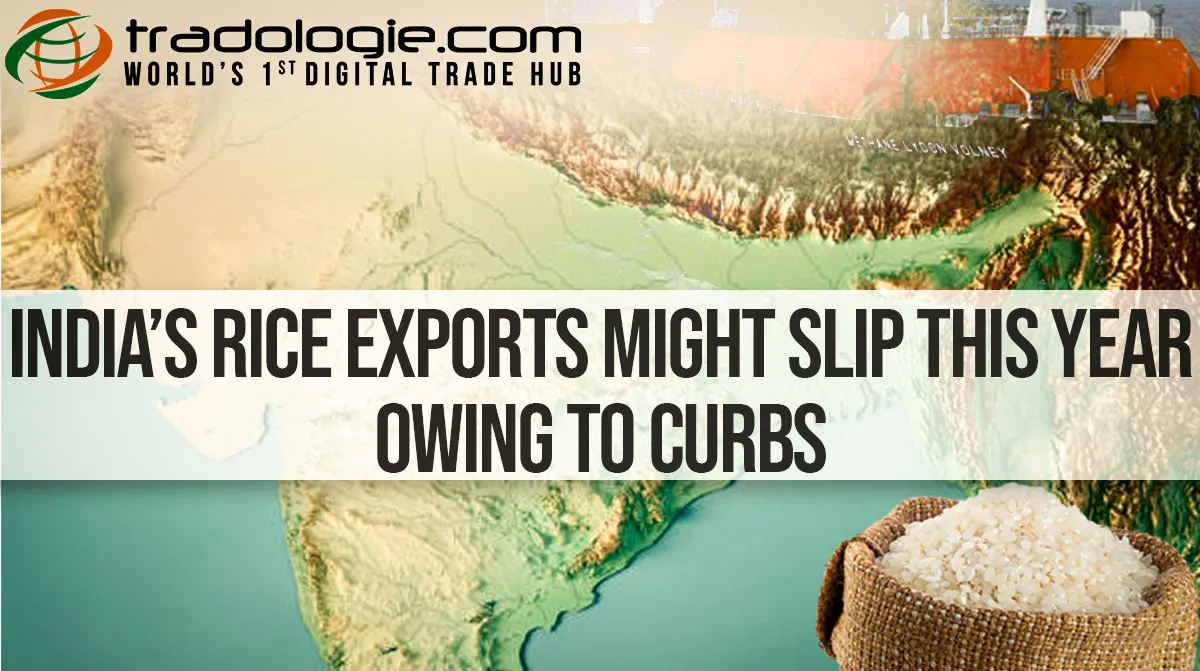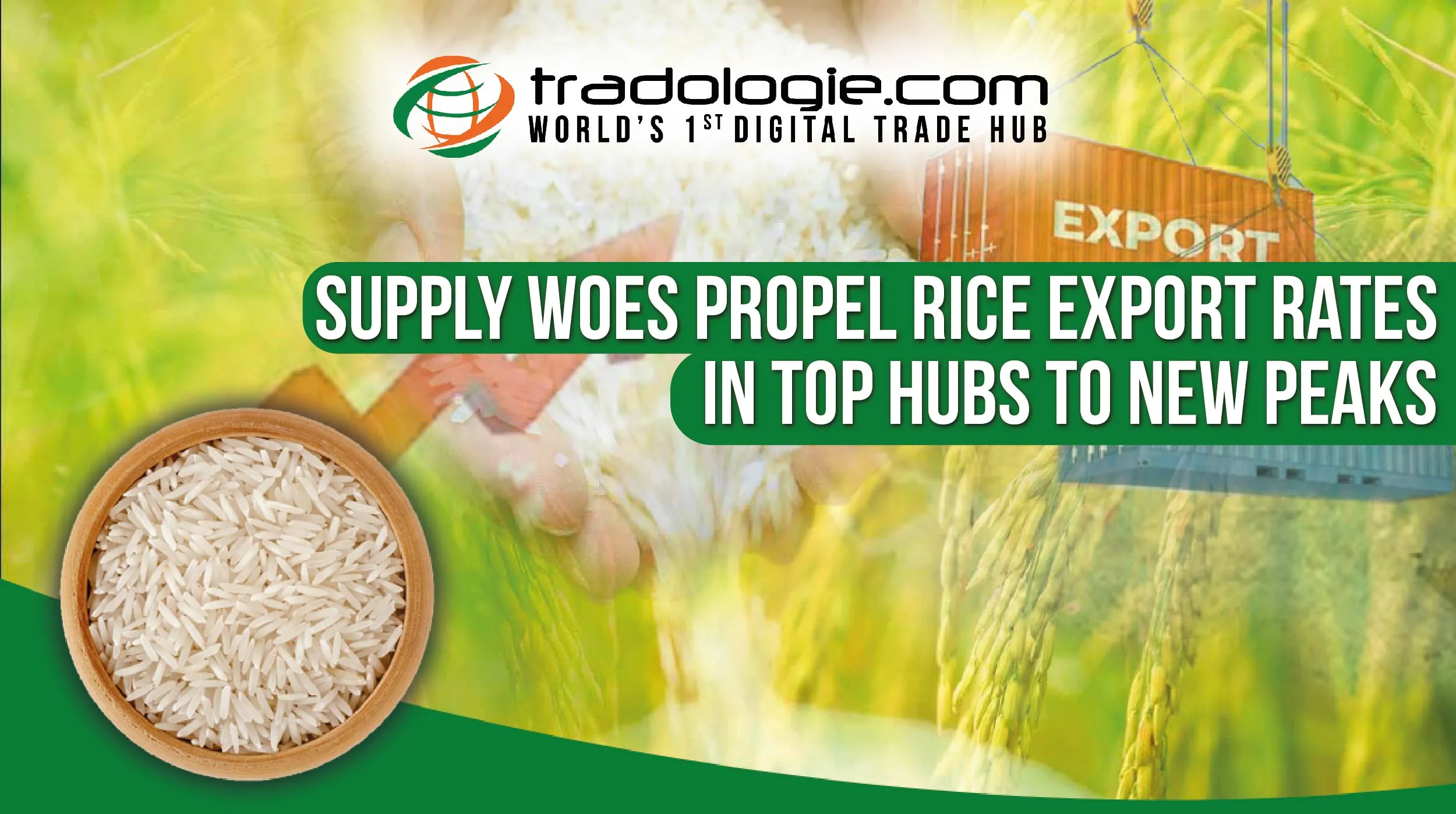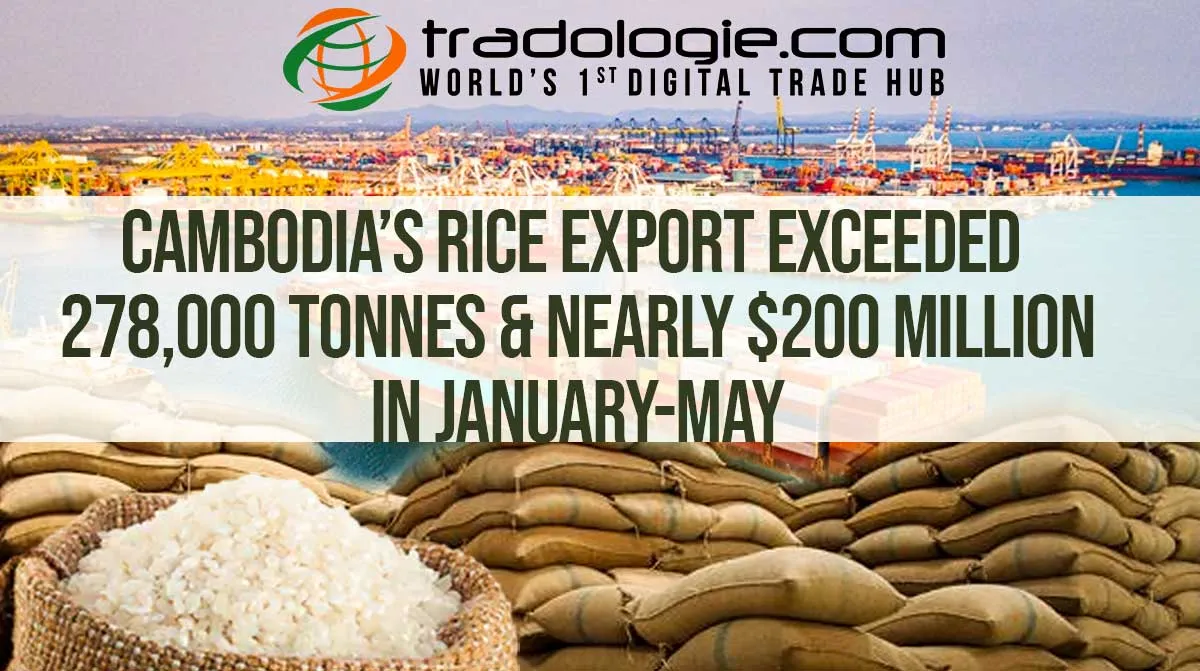Highlights :
- Philippines extends rice import ban → 40%+ export disruption.
- Sept 2025 exports fell 43% in volume, 55% in value.
- Africa & Middle East emerge as high-demand B2B markets.
- Focus on premium, specialty, and value-added rice to protect margins.
- Digital B2B platforms enable direct bulk sales to verified buyers.
Vietnam & rice export landscape faces turbulence as the Philippines signals an extension of its import ban into late 2025. This development is not a merely bilateral hiccup & it is a structural stress test for Vietnam & rice trade strategy. With the Philippines accounting historically for as much as 40 & 45 percent of Vietnam & rice exports, the ban amplifies the risk of overdependence on a single market. To sustain growth and manage downside exposure, Vietnamese exporters must pivot aggressively toward alternative B2B markets, optimize higher-value rice products, and strategically reposition in Africa, the Middle East, South Asia, and Southeast Asia.
- Philippines: 2,900,000 tonnes , Ivory Coast: 750,000 tonnes , Ghana: 660,000 tonnes
- Others: 990,000 tonnes
Background: Vietnam’s Rice Exports & the Philippine Disruption
Vietnam’s rice exports are entering a critical phase, coinciding with the winter–spring harvest season when surplus supply peaks. The Vietnam Food Association (VFA) warns that in 2026’s first quarter—the key release period for the winter crop—export volumes may come under intense pressure due to the Philippines’ ban extension. The Philippines’ Department of Agriculture has suggested extending the ban originally planned for September–October until the end of 2025. Imports may resume briefly in January at about 300,000 tonnes, but a suspension from February to April is again being contemplated to support domestic prices.
Already, the impact is visible. September exports slumped 43 percent in volume to 466,800 tonnes and declined 55 percent in value to US $232 million. Over the first nine months of 2025, Vietnam’s rice exports totaled 6.83 million tonnes, valued at US $3.49 billion, down about 2 percent in volume and nearly 20 percent in value year-on-year; the average export price slipped to US $509 per tonne.
Yet even before the ban fully bites, Vietnam is seeking to recalibrate: Ghana has overtaken the Philippines as Vietnam’s top rice importer, commanding 22 percent of total exports; Ivory Coast holds 21 percent; Malaysia about 10 percent.
The new data backs this trend: in 2025’s first eight months, Vietnam shipped nearly 6.3 million tonnes, worth US $3.2 billion. The Philippines remained its largest buyer with ~2.9 million tonnes, followed by Ivory Coast (~750,000 tonnes) and Ghana (660,000 tonnes).
Given that the Philippines absorbed nearly half of Vietnam’s external rice demand in recent years, the current policy posture is a significant shock to the distribution of supply flows.
Vietnam’s Export Rice Types: Where Strength Lies
Vietnam exports a diversified rice portfolio:
- 5 % broken fragrant rice — quoted at around US $450/tonne
- Jasmine (fragrant) rice — around US $490/tonne
- 100 % broken rice — quoted in the range of US $310–314/tonne
Alternative Markets with Demand & Absorptive Capacity
Given the constraints in the Philippines, Vietnam must accelerate B2B penetration in regions with structural demand and trade stability:
West & Central Africa
- Ivory Coast: In Q1 2025 alone, Vietnam exported USD 143 million to Ivory Coast—up 138 percent year-on-year.
- Ghana: Vietnam exported US $360.87 million in rice to Ghana in 2023.
These countries rely heavily on rice imports due to domestic production deficits, affording Vietnam room to scale volumes.
- Middle East & Persian Gulf: Countries such as Saudi Arabia, UAE, and Oman persistently import rice for food security. Vietnam’s fragrant and parboiled grades are well positioned to compete here if aligned with quality, certification, and logistics.
- South Asia & Southeast Asia: Sri Lanka, Bangladesh, the Maldives, and Indonesia offer demand corridors. In fact, Vietnam and Indonesia are negotiating a new rice trade agreement following Indonesia’s 97 percent drop in rice imports.
- East Asia & China: While China is moving toward self-reliance in staple crops, niche aromatic and organic rice still offer viable B2B channels for Vietnamese rice exporters.
The key is not just finding new geography, but matching Vietnam’s export rice types to local market preferences—securing B2B contracts, distribution channels, and compliance alignment early.
Strategic Imperatives for B2B Exporters
- Diversify Market Exposure - Rice exporters must avoid reconcentration in one market. Even if the Philippines reopens, mitigating loss by having contracts across Africa, GCC, and South Asia is essential.
- Add Value, Processed Grades & Branding - To maintain margins, increasing the share of value-added or specialty rice—parboiled, aromatic blends, branded exports—reduces reliance on commodity pricing.
- Leverage Trade Agreements & Preferential Tariffs - Vietnam needs to secure free trade or reduced tariff access to target markets. Lower duty advantages can make Vietnamese rice more competitive versus local or alternative suppliers.
- Strengthen B2B Platforms & Networks - Using digital B2B marketplaces and verified buyer platforms enables exporters to sell rice in bulk online and connect directly with vetted importers. This approach helps absorb shocks in traditional trade channels.
- Contract Flexibility & Hedging - Contracts should include clauses for demand changes, price volatility, and supply disruptions. Financial hedging can buffer exporters from sudden demand contractions.
- Government & Export Council Support - Industry bodies such as the Vietnam Food Association should intensify trade promotion, negotiate access, facilitate buyer missions, and lobby for fair trade terms.
Outlook: Redrawing the Rice Export Map
The Philippines’ ban is unlikely to be a singular disruption—it is shaping up as a structural trigger. If extended into 2026, it will accelerate the reallocation of Vietnam’s rice volumes to African and Middle Eastern markets. Forecasts already suggest Vietnam aims for 8–8.8 million tonnes of rice exports in 2025. (Source: VnEconomy)
In an era where food security is becoming geopolitical, Vietnam’s ability to pivot away from reliance on the Philippines will determine its rice export resilience. The global B2B rice map is being redrawn—and exporters who grasp new trade lanes, invest in value, and diversify markets will lead the next wave.
- Philippines extends rice import ban → 40%+ export disruption.
- Sept 2025 exports fell 43% in volume, 55% in value.
- Africa & Middle East emerge as high-demand B2B markets.
- Focus on premium, specialty, and value-added rice to protect margins.
- Digital B2B platforms enable direct bulk sales to verified buyers.





